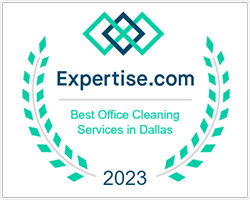Overview
The key to maintaining a healthy, professional environment is creating a cleaning schedule that reflects how your building is actually used. In this blog, the commercial cleaning experts from Prestige Janitorial Services explain how to design a custom cleaning plan based on occupancy, traffic flow, and activity levels. You’ll learn how to identify cleaning priorities, determine the right frequency for each task, and ensure your building stays spotless without overspending.
Highlights
- The importance of custom cleaning plans
- Assessing usage and traffic zones
- Setting cleaning frequency by area
- Keeping cleaning schedules efficient
Introduction
A cleaning plan that works for a small office won’t fit a 24-hour healthcare facility or a busy retail store. Each building has its own patterns of use that influence how often different areas need attention. A well-designed cleaning schedule takes these unique factors into account, striking a balance between cleanliness, safety, and efficiency. Creating a schedule tailored to your building’s usage helps you allocate resources wisely, maintain a professional appearance, and reduce wear on your facility.
Why Every Building Needs a Custom Cleaning Plan
Standard cleaning checklists often fall short because they don’t account for how frequently specific spaces are used. A custom plan ensures that cleaning aligns with actual demand, keeping high-traffic zones fresh while avoiding unnecessary work in low-use areas.
Custom schedules offer several benefits:
- Better hygiene and appearance: Regular cleaning of busy spaces prevents buildup and odors.
- Improved efficiency: Staff focus on what needs cleaning most instead of following a generic checklist.
- Longer-lasting materials: Proper care of floors, carpets, and fixtures reduces wear and replacement costs.
- Healthier environments: Targeted disinfection prevents the spread of germs where people interact most.
By analyzing how your building is used on a day-to-day basis, you can develop a cleaning routine that keeps it clean, safe, and cost-effective.
How To Assess Usage and High-Traffic Zones
Before you can design an effective cleaning schedule, you need to understand how your building is used. Every facility has areas that see constant activity and others that remain relatively quiet. Assessing these usage patterns helps you allocate cleaning efforts where they are needed most, ensuring efficiency and consistent cleanliness.
Step 1: Map Out and Observe Your Space
The first step in creating a data-driven cleaning plan is to take a close look at your facility’s layout. Identify every space, from main entrances to back rooms, and observe how people move through them throughout the day. Note where traffic is heaviest and which areas experience peaks at specific times, such as lunch breaks or shift changes.
Key elements to assess include:
- Entryways and exits: The busiest points in most buildings, where dirt and debris are frequently tracked inside
- Restrooms and kitchens: Areas that require frequent attention to maintain hygiene
- Reception and waiting areas: Spaces that influence first impressions and must stay spotless
- Hallways and elevators: High-contact areas that accumulate dust and fingerprints quickly
Creating a visual map or simple chart helps you see patterns clearly, making it easier to decide how often each area needs cleaning.
Step 2: Identify High-Use, Medium-Use, and Low-Use Areas
Once your building’s layout is documented, group spaces by how frequently they’re used. High-use zones need daily or multiple cleanings, while low-use areas can be maintained less often.
Typical area classifications include:
- High-use zones: Entrances, lobbies, restrooms, cafeterias, and break rooms
- Medium-use zones: Offices, conference rooms, and hallways
- Low-use zones: Storage rooms, utility closets, maintenance areas, and rarely used office spaces
This categorization ensures that cleaning resources are prioritized correctly. By focusing on areas where dirt and germs accumulate most quickly, you reduce the risk of contamination and keep the building looking its best.
Step 3: Consider External and Environmental Factors
Your building’s surroundings and seasonal conditions also influence how often cleaning is needed. For example, an office near a construction site or a school with a large outdoor area may experience more dust, dirt, or mud tracked inside. Similarly, winter months often demand extra attention to entryways where snow, salt, and moisture accumulate.
Regularly reviewing these environmental influences helps you adjust cleaning frequencies over time. A flexible cleaning schedule that adapts to changing conditions will deliver better results and improve the long-term appearance of your facility.
Determining Cleaning Frequency by Area Type
Once you’ve identified how your building is used and which areas see the most activity, the next step is setting cleaning frequencies that match those usage patterns.
High-Traffic Areas: Clean Daily or Multiple Times a Day
High-traffic zones are the heartbeat of your building. These spaces accumulate dirt, debris, and bacteria quickly, making frequent cleaning essential. Daily or even multiple cleanings help maintain hygiene, safety, and appearance in the areas people use most.
Examples of high-traffic areas include:
- Entrances and lobbies where outdoor debris is tracked in
- Restrooms that require regular disinfection and restocking
- Break rooms and cafeterias with food residue and spills
- Elevators and main hallways with constant contact from hands and shoes
Frequent cleaning of these areas also protects against the spread of germs and helps reinforce a professional, well-maintained image.
Moderate-Traffic Areas: Clean a Few Times per Week
Medium-use spaces may not need daily cleaning, but they still benefit from regular maintenance to prevent buildup and wear. These areas often serve as shared environments that see consistent, though not constant, activity.
Examples of moderate-traffic areas include:
- Office spaces where employees work daily but generate less debris.
- Conference rooms are used for meetings and presentations.
- Stairways and corridors that connect departments or work zones.
Cleaning these areas several times per week, combined with touchpoint disinfection as needed, helps maintain a clean and comfortable environment without over-allocating resources.
Low-Traffic Areas: Clean Weekly or As Needed
Certain parts of a building see minimal activity and can be cleaned less frequently without sacrificing overall hygiene. However, they should still be inspected regularly to ensure dust and debris don’t accumulate unnoticed.
Examples include storage rooms, utility closets, mechanical areas, and back-of-house spaces. Cleaning these zones weekly or as needed reduces costs while keeping them organized and preventing long-term buildup that could affect safety or air quality.
Adjust Cleaning Frequency
A great cleaning schedule is flexible. Seasonal changes, staff fluctuations, and building use patterns should influence how often areas are cleaned. For instance, entryways may require more frequent cleaning during winter when moisture increases, or after large events when foot traffic spikes.
Regularly reviewing and adjusting cleaning frequencies ensures your schedule continues to align with the building’s actual needs. This approach helps balance cleanliness, cost-efficiency, and labor productivity over time.
How Professional Cleaners Keep Schedules Efficient
Professional cleaning companies understand that a well-organized schedule is essential for maintaining both cleanliness and efficiency. Creating a plan is only the first step. Keeping it consistent and adaptable over time ensures your building always looks its best, even as usage patterns change.
The Importance of Structure and Consistency
A structured cleaning schedule reduces wasted time and ensures every part of your facility receives the right level of attention. Professional cleaners analyze your building’s layout, usage, and traffic patterns to plan routes that minimize overlap and maximize productivity. This approach allows cleaning teams to stay organized, maintain steady workflow, and ensure consistent quality from one day to the next.
Planning Ahead for Changing Building Conditions
Professional cleaners take a proactive approach to changing conditions. Rather than reacting to issues as they arise, they monitor building activity, occupancy levels, and environmental factors throughout the year. This allows them to anticipate cleaning challenges before they affect daily operations.
This proactive planning ensures that cleanliness and safety remain consistent year-round, no matter how your building’s needs evolve.
Using Technology and Team Coordination
Modern cleaning teams rely on technology to streamline scheduling, track progress, and maintain accountability. Digital tools make it easier to monitor cleaning tasks in real time, ensure adherence to standards, and track supply usage. This data-driven approach helps optimize staff time and ensures that all tasks are completed consistently and on schedule.
How professional cleaning teams keep schedules running efficiently:
- Task zoning is used to divide large spaces into manageable cleaning areas.
- Time tracking measures performance and allows the team to adjust workloads.
- Quality checks and inspections maintain consistency.
- Open communication between supervisors and cleaning teams helps to address issues promptly.
Keep Your Building Clean, Efficient, and Consistent
A custom cleaning schedule creates a safer, healthier, and more efficient environment for everyone who uses it. By aligning cleaning tasks with your building’s actual usage patterns, you ensure that every area receives the right attention at the right time. This approach extends the life of your surfaces, improves productivity, and enhances your facility’s overall appearance.
A well-designed schedule is never static. Reviewing your plan regularly and adjusting for seasonal or operational changes keeps it relevant and effective. With the right strategy, you can maintain a spotless, welcoming space that reflects your commitment to quality and care.
Call Prestige Janitorial Services for Professional Commercial Cleaning Services
Prestige Janitorial Services creates and manages custom commercial cleaning schedules tailored to your building’s unique needs. Our professional commercial cleaners handle everything from daily upkeep and deep cleaning to detailed scheduling and ongoing quality control, so your facility always looks its best.
Call (972) 372-9071 today to schedule your consultation and discover how our commercial cleaning services can keep your building perfectly maintained.



